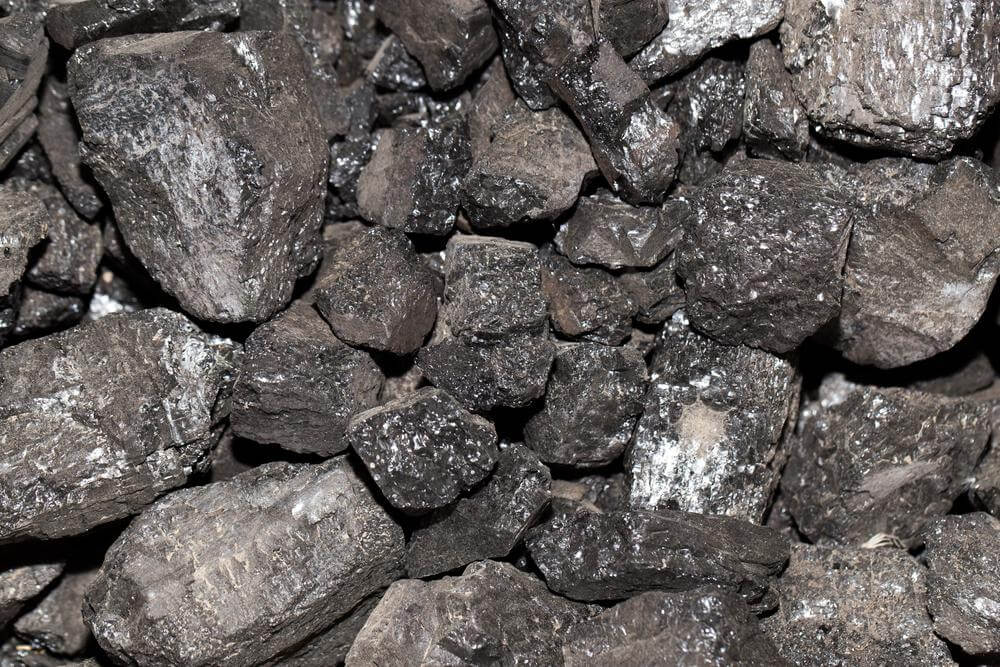Generating wealth preservation, along with superior risk adjusted returns, is American’s strategy. American invests in Core, Core Plus, and Value Add apartment properties. American’s Senior Partners are experienced fiduciaries having owned and managed over $4.5 billion in apartment properties over the past 40 years.
Ann McSheehy, Senior Principal at American, says, “It’s about how well you did in keeping risk low and generating outsized returns, how well you did in improving people’s lives and neighbourhoods, how successful you were in bringing solid alpha to co-investors, and, across all parts of the economic cycle. This is where we are differentiated, is in the quality of work that we do – we are stable and focused on wealth preservation, while we generate higher alpha for co-investors through our market expertise in deal sourcing and targeted renovations; we keep the investment stable across all economic cycles; and we make a huge positive impact on the lives of residents and neighborhoods – which allows us to bring great returns, even with an investment which has the risk profile of a bond.”
“For several generations, my family has owned and managed apartment properties, with a strong focus on strategic value add,” says Ms. McSheehy. “Through the generations, we have cleaned up and turned around neighbourhoods which were once threatening to fall to crime, but which are now leading communities in the U.S.”
Apartment Properties – the Gold Standard
Apartment properties are the gold standard of the investment world, performing well in every economic environment. McSheehy explains, “Once in a while over the years, people will ask me, are we in a bubble, and I explain to them that Apartment Properties (Multifamily) is the gold standard of an investment that performs well in every economic environment. Even in the worst or recessions or depressions, when traditional stocks and bonds perform poorly, and even private equity performs poorly, and even when just about all of the other asset classes in real estate perform badly, Apartment Properties do well.”
Over the past 30 years, investment in real estate has yielded a greater return than the S&P 500, the Dow Jones, the NASDAQ, or the Russell indices. Returns on private real estate investments in each of these periods, were higher than for publicly traded real estate, and had lower volatility, as measured by the National Council of Real Estate Investment Fiduciaries’ NCREIF National Property Index. (FTSE NAREIT U.S. Real Estate Index Returns, National Association of Real Estate Investment Trusts, S&P 500, Russell, Dow Jones, Nasdaq, FTSE NAREIT equity
REIT index.)
Why is that? “In a recession or a depression, companies do badly, stocks generally do badly and people lose huge percentages of their wealth in stocks and other investments as happens in every cycle; companies lay people off. Then, companies rent less office space and retail space, so those asset classes in real estate do terribly. And, far fewer numbers of people are able to afford a single family home, so those do terribly, too – they are not buying – they are renting. All of those buyers are forced to become renters – and so especially in the worst times, renter demand is robust and grows, and apartment properties perform well.” American’s principals have owned and managed apartment properties with consistent results throughout all market cycles.
Strong Tailwind Demographics
The ‘prime renting age’ in the U.S. is approximately 18-35 years old. Over the coming 10 years , the number of people “ageing out of” prime renting age is far smaller than the number of people “ageing into” this age. The net increase in individuals in prime renting age is set to increase from about 71 million people to about 86 million people. Additionally the U.S. Census projects that homeownership will decline 6-8% in the coming decade, leading to a 6.6-8.8 million new renter households.
Over the past decade, the construction of apartment properties declined. New construction is aimed primarily at the urban centres of large primary market cities, and nationally is projected to meet only a small fraction of new demand for apartments. This supply constraint creates strong fundamentals for the asset class, over and above its already strong fundamentals.
Wealth Preservation
“The investment world all agrees that apartment properties are the ultimate in Wealth Preservation,” says McSheehy. Insurance companies and other institutional investors price out the risk in apartment property investment, as having the risk of a bond. But the distinction is that, it also brings good returns. “Housing is a core human need, becoming even more of a need in bad economic times when people cannot buy and must rent.”
Triple Bottom Line – Virtue and Returns
American invests with an eye on a triple bottom line: adding value to the lives of residents; adding value the lives of individuals in the neighbourhood around the property; and adding value to co-investors. These three goals and objectives strengthen and reinforce each other, in a circle. “Neighborhoods are always in a state of change, a state of flux. Nothing in life ever stands still,” says McSheehy. “Neighborhoods are either improving or getting worse. A lot of other groups just suck cash out of properties, which essentially means that they are sucking cash out of neighborhoods, and when they do so, a large anchor property has a huge effect on making the neighborhood around it a much worse place to live.” American, in the Value Add work that it does, differentiates itself by investing capital to positively transform neighborhoods and properties, which results in jobs returning to the neighborhood, and far increased quality of life for the individuals living in these neighborhoods.
It also leads to higher returns for the co-investors who have invested in these Apartment Properties. McSheehy explains, “It is not Value Added by just buying at a low price or using unnecessary risk – rather, it is actual real, physical value which is added to the lives of residents and to the neighbourhood. This is more work than other groups care to do. But it is how we are able to generate significant returns while maintaining the bond-like, Wealth Preservation risk profile of the investment.” “To put it in perspective: we do Core, Core Plus, and Value Add. This applies just to our active Value Add: for some of our work, we look for properties where we can turn the property around and turn the community around. Generally, we see properties that fall into disrepair, and some crime, and it obviously has a huge destabilizing effect on the entire neighbourhood around it. The ownership there had been sucking cash out of the property and not investing into the property. They haven’t been doing background or crime checks on their residents. They let in some bad apples. Then all the good people live in fear, which is most of the people. And the property looks bad as well. What we do for our Value Add, is, we buy properties like this, generally 100 apartments to about 500 apartments, and we clean them up. We put in place a top quality property management company. We put in a renovations budget, we clean up the property, we make it a beautiful place to live, a place where the residents are proud to live. “That is just one example, we do all types of value add.”
Significant Value Add Leadership in the Industry
American and American’s partners have consistently delivered IRRs above those of the industry. McSheehy explains that it is due to the far higher amount of time, focus, and hard work that the group puts into each property value add renovation. “This is something that other groups are not able to do, even if they wanted to do, which they don’t want to,” McSheehy says. “We spend months negotiating materials prices down. We pay far less than market prices for materials, whereas the rest of the industry pays about 120% of the market prices for materials in their renovations because of markups from contractors.”
American does not tie construction management fees to the cost of the renovation, as the rest of the industry does. “We are IRR driven, and when we invest with co-investors, we are compensated from the IRRs and from our portion of the good returns results for co-investors. This is a clear and transparent alignment of interest which is lacking in the rest of the industry. Our construction management fees are minimal and cover part of the staff cost for that renovation, and are not tied to renovation cost, but to how much we are actually able to increase returns for co-investors, and we don’t get paid anything significant until after the investor has received very good returns.”
Ms. McSheehy explains how renovations influence the IRR of a property. “When you run a sensitivity analysis, you see that some things do not affect the IRRs very much – actually most things don’t. However, the things that affect the IRRs substantially are, first, the amount spent on that renovation and how far those dollars go – the selection of where those dollars go, and second and most importantly, the rents that residents pay after the renovation.”
Throughout the rest of the industry, the real estate group is paid 5% of whatever they spend on a renovation, which is a direct conflict of interest with their investors. “No one will go out and spend an extra 200 hours searching for better or cheaper or higher quality materials for a renovation, or more innovative ways to make a property really beautiful and
‘breathtaking’ for prospective residents, when they are just getting paid more if they spend more,” McSheehy explains. “Even for the groups that would do so, they are directly incentivized to do the exact opposite. “We operate from a completely different paradigm”
Typically, when a real estate group does value add, says McSheehy, “they call and say, ‘Joe, bring in the new cabinets and the sand colored carpets,’ and make a phone call to a designer if necessary for a common area. They get tiny rent increases and they call it a success, and say they are a huge success because they have done a huge volume of apartments – with no quality or high results whatsoever, for the co-investors. Or the residents. We have never had a value add renovation like that – we expect to see higher rent increases which translates directly to IRR, and we do beautiful renovations which we put huge amounts of time into. We do everything so differently. We operate from a completely different paradigm. It comes down to diligence and very hard work. There are no shortcuts.”
High IRRs and High Rents – Driven by a Deep Understanding of Human Perception
Matt Williamson, Senior Principal with American, says, “It also comes down to the fact that we have a significant advantage, and that is the deep lifetime of renovation experience of Ms. McSheehy. The entire industry is run by men, who have a significant disadvantage when it comes to design.”
Ms. McSheehy is unique, in that she is a Senior Principal and she also leads the Value Add strategies and details. “She leads from the front, like Alexander the Great, not from a phone call from afar once a year.
The difference in the product and in the Alpha is immense,” he explains. She has studied at the number one ranking best universities and graduate schools around the world, Oxford, Georgetown, London Business School, Sorbonne, she has done Private Equity around the world and in the U.S., and she is also a cultural and style genius, the likes of which have never been seen in the U.S., Europe, London, or the rest of the world. “I remember the story about how, when she was young in the previous generation of the business, she wanted to prove a point. There was an apartment property in the Chicago area that her family had renovated and already exceeded expectations on rent increases following a renovation a few years before. She made a few inexpensive changes and increased rents by the same amount again, as they had done in the original renovation – which had already exceeded expectations. She has always had this tremendous ‘feel’ for what makes renters want to live in a place, and love to live in a place. It is far more and far different than a design perspective; it is a unique understanding of human perception and feeling and what people visually and emotionally want in a home.”
Bringing Value to Individuals
The higher returns American has, compared to its industry peers, are because “we give residents the opportunity to live in an apartment of a far higher quality than they can get in other apartment properties in the area. “In a way, it fulfils one of the important dreams of people’s lives. We are giving the opportunity to a large number of people, to live in high quality homes that they are proud of. Even if they will one day buy a home, it will never have as high of a design quality as the apartment product that we offer.”
Robust Pipeline
Able to source the most attractive deals, both on and off market, the company maintains a robust network of relationships throughout the industry, allowing it to have a strong pipeline of deals. “We typically bid on about 2% to 4% of the deals that we see,” says McSheehy. “This allows us to maintain a very high quality of product. We are focusing on key geographic locations which are outperforming in our key metrics. Over the past 40 years, these criteria have been extremely successful at winnowing out which markets will provide robust support for outsized returns relative to the very low risk of apartment properties.”
“Rocking Chair Test”
McSheehy says that the culture of American is different because it focuses on Triple Bottom Line and purpose. “As a company, we say, ‘this is our Purpose,’ ‘this is our mission, this is our impact on the world, and this is what no one else can do the way we can,’ and every day lead every day with that purpose.
“Does your work pass the ‘rocking chair’ test? Does your work pass the ‘deathbed’ test? Is what you are doing having a positive impact on peoples’ lives? This is what I believe is one of my missions in life, it is work that I have been trained in doing my entire life. Within the apartment property asset class, we do great Core and Core Plus, and Value Add, and for me, really, with all of the asset classes, and especially regarding the Value Add, it is tremendous to see the effects of our work in cleaning up entire neighborhoods, making them far safer places to live, far more beautiful places to live, places for jobs to return to, neighborhoods that flourish, and the lives of families and individuals are able to flourish. This creates actual physical Value for people in their lives, brings stable returns and stable alpha for our co-investors throughout every economic cycle, thus helping their lives, and doing our part to contributing to making our economy a more stable and healthy one.”



























